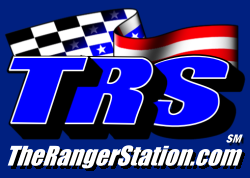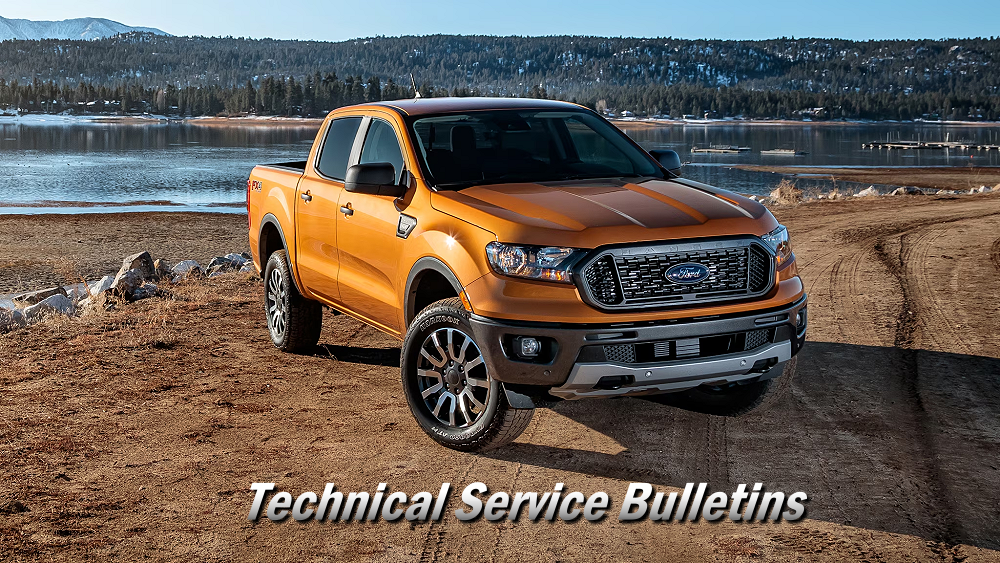Technical Service Bulletin
TSB 24-2101 10R80 Automatic Transmission – Harsh/Delayed Engagement And/Or Harsh/Delayed Shift – Non-Main Control Break-In Capable
Issue:
NOTICE: There was a TSB 23-2350 on this matter issued November 2023. This TSB 24-2101 is newer. I don’t see the differences but have included both for you to look at. You may also want to look at TSB 23-2123.
Some 2017-2020 F-150, 2018-2021 Expedition/Navigator/Mustang, 2019-2023 Ford Ranger vehicles equipped with a 10R80 transmission may exhibit a harsh/delayed engagement and/or harsh/delayed shift, an illuminated MIL with DTC P0751, P0752, P0756, P0757, P0761, P0762, P0766, P0767, P0771, P0772, P2700, P2701, P2702, P2703, P2704, P2705, P2707, P2708, P0729, P0731, P0732, P0733, P0734, P0735, P0736, P076F, P07D9, P07F6 and/or P07F7 stored in the PCM or TCM. This may be due to the transmission solenoid ID strategy, sticking valves in the main control valve body and/or axial movement of the CDF clutch cylinder (7H351) sleeve. To correct the condition, follow the Service Procedure to identify and correct the condition.
Action:
Follow the Service Procedure to correct the condition on vehicles that meet all of the following criteria:
One of the following vehicles:
- 2017-2020 Ford F-150
- 2018-2021 Ford Expedition/Navigator/Mustang
- 2019-2023 Ford Ranger
Equipped with a 10R80 transmission
At least one of the following conditions:
- Harsh engagement
- Delayed engagement
- Harsh shift
- Delayed shift
Parts:
Service Procedure:
NOTE: This article is for information only. Determine the causal part number and use available labor times in Section 7 of the SLTS Manual or claim M-time in accordance with the Warranty and Policy Manual. Causal part number IN in this article refers to the information only status and is not able to be claimed.
1. Using the latest software level of the appropriate Ford diagnostic scan tool, check for DTCs.
2. Are any of the following DTCs present? P0751, P0752, P0756, P0757, P0761, P0762, P0766, P0767, P0771, P0772, P2700, P2701, P2702, P2703, P2704, P2705, P2707, P2708, P0729, P0731, P0732, P0733, P0734, P0735, P0736, P076F, P07D9, P07F6 and/or P07F7.
(1). Yes – proceed to Sticking Valves – Main Control Valve Body Step 1.
(2). No – proceed to Transmission Solenoid Strategy Step 1.
Transmission Solenoid Strategy
1. Reprogram the existing transmission strategy download into the PCM/ TCM. Refer to WSM, Section 307-01.
(1). For FDRS applications when prompted, select Transmission hardware was not replaced – Reprogram TRID strategy for the existing transmission.
(2). For IDS applications when prompted, select Reprogram Only-No Hardware Replaced.
2. Perform the adaptive learning drive cycle. Refer to WSM, Section 307-01.
3. Does the vehicle still exhibit the condition after performing the adaptive learning drive?
(1). Yes – proceed to Sticking Valves – Main Control Valve Body, Step 1.
(2). No – repair is complete.
NOTE: Advise the customer this vehicle is equipped with an adaptive transmission shift strategy which allows the vehicle’s computer to learn the transmission’s unique parameters and improve shift quality. When the adaptive strategy is reset, the computer will begin a relearning process. This relearning process may result in firmer than normal upshifts and downshifts for several days.
Sticking Valves – Main Control Valve Body
NOTE: Affected vehicles are not main control break-in capable.
1. Overhaul (clean and inspect) the main control valve body and perform the adaptive learning drive cycle. Refer to WSM, Section 307-01.
2. Does the vehicle still exhibit the condition after overhauling the main control valve body and performing an adaptive learning drive cycle?
(1). Yes, vehicles built on or before 15-Aug-2022 – proceed to CDF Clutch Cylinder Replacement Step 1.
(2). Yes, vehicles built on or after 16-Aug-2022 – this article is complete. Refer to WSM, Section 307-01 for normal diagnostics.
(3). No – repair is complete.
NOTE: Advise the customer that this vehicle is equipped with an adaptive transmission shift strategy which allows the vehicle’s computer to learn the transmission’s unique parameters and improve shift quality. When the adaptive strategy is reset, the computer will begin a relearning process. This relearning process may result in firmer than normal upshifts and downshifts for several days.
CDF Clutch Cylinder Replacement
NOTE: For Mexico, U.S. and Canadian vehicles which are low time in service (LTIS) policy eligible, the dealer has the option to continue with this TSB repair or replace the transmission under the LTIS policy.
1. Remove the transmission and mount the transmission to the bench. Refer to WSM, Section 307-01.
2. Disassemble the transmission. Perform only the necessary steps to remove the clutch and planetary assembly from the transmission case. Refer to WSM, Section 307-01.
(1). It is only necessary to remove the torque converter, transmission fluid pan and gasket, transmission fluid auxiliary pump (if equipped), fluid filter and main control valve body assembly, all 4 speed sensors (intermediate speed sensor A [ISSA], intermediate speed sensor B [ISSB], turbine shaft speed [TSS] and output shaft speed [OSS]), transmission fluid pump, front support assembly and the clutch and planetary assembly. Refer to WSM, Section 307-01.
3. Disassemble the clutch and planetary assembly. Perform only the necessary steps to remove the CDF clutch cylinder and the No. 3 sun gear shaft and No. 2 ring gear assembly from the clutch and planetary assembly. Refer to WSM, Section 307-01.
(1). It is only necessary to remove the A clutch assembly, the selective shim and T3 thrust bearing, remove and discard the 5-input shaft front seals.
(2). Remove the No. 1 planetary carrier snap ring, clutch, and planetary container cylinder, the E clutch and input shaft assembly, the No. 3 planetary carrier and No. 3 sun gear, the No. 3 sun gear shaft and No. 2 ring gear assembly. Refer to WSM, Section 307-01.
4. Remove and discard the sun gear No. 3 shaft seals. Install the 4 new sun gear No. 3 shaft seals. Refer to WSM, Section 307-01.
5. Disassemble the C, D and F clutch assemblies from the CDF cylinder. Discard the CDF cylinder. Refer to WSM, Section 307-01.
6. Assemble the C, D and F clutch assemblies into the new CDF clutch cylinder. Refer to WSM, Section 307-01.
7. Perform the C, D and F clutch pack endplay measurements for proper clearance. Refer to WSM, Section 307-01.
8. Remove and discard the input shaft-to-sun gear No. 3 shaft seals. Install the 5 new input shaft-to-sun gear No. 3 shaft seals. Refer to WSM, Section 307-01.
9. Remove and discard the input shaft seal. Install the new input shaft seal. Refer to WSM, Section 307-01.
10. Install the 5 new input shaft front seals. Refer to WSM, Section 307-01.
11. To reassemble the clutch and planetary assembly, reverse the disassembly procedure. Refer to WSM, Section 307-01.
12. Perform the T3 thrust bearing measurement to set transmission front end clearance. Refer to WSM, Section 307-01.
13. Reassemble the transmission. Refer to WSM, Section 307-01.
14. Install the transmission. Refer to WSM, Section 307-01.
15. Perform an adaptive learning drive cycle. Refer to WSM, Section 307-01.
NOTE: Advise the customer that this vehicle is equipped with an adaptive transmission shift strategy which allows the vehicle’s computer to learn the transmission’s unique parameters and improve shift quality. When the adaptive strategy is reset, the computer will begin a relearning process. This relearning process may result in firmer than normal upshifts and downshifts for several days.
NOTE: The information in Technical Service Bulletins is intended for use by trained, professional technicians with the knowledge, tools, and equipment to do the job properly and safely. It informs these technicians of conditions that may occur on some vehicles, or provides information that could assist in proper vehicle service. The procedures should not be performed by “do-it-yourselfers”. Do not assume that a condition described affects your car or truck. Contact a Ford or Lincoln dealership to determine whether the Bulletin applies to your vehicle. Warranty Policy and Extended Service Plan documentation determine Warranty and/or Extended Service Plan coverage unless stated otherwise in the TSB article. The information in this Technical Service Bulletin (TSB) was current at the time of printing. Ford Motor Company reserves the right to supersede this information with updates. The most recent information is available through Ford Motor Company’s on-line technical resources.

